Founded in Truth Fellowship - Bible Teachings and Sermons
Founded in Truth Fellowship is a Messianic Fellowship in Rock Hill, SC that provides Biblical teachings, fellowship, and resources for Biblical studies. Founded in Truth Fellowship is able to spread the gospel and the word of Yeshua because of supporters like you. If Founded in Truth has been a blessing to you or your family, we ask that you would give so that the same messages can bless others. To give to Founded in Truth Fellowship, click this link ”https://foundedintruth.com/give”
Episodes
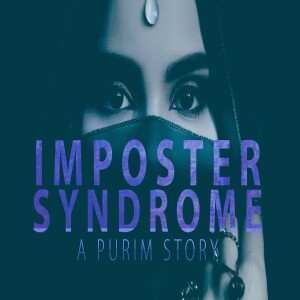
Saturday Feb 20, 2021
Saturday Feb 20, 2021
Imposter Syndrome - A Purim Story
Introduction
This Bible teaching from Founded in Truth Fellowship, delivered by Matthew Vander Els, delves into the ancient story of Esther to illuminate a very modern and relatable struggle: the feeling of inadequacy, often referred to as imposter syndrome. The story of Purim, which commemorates the deliverance of the Jewish people in Persia through Queen Esther's courage, offers profound insights into how we can navigate feelings of not belonging and step into the roles God has placed us in.
The Setting: Exile and Uncertainty
The backdrop of the book of Esther is crucial to understanding the context. It takes place after the Babylonian exile, a period when the Judeans were taken from their homeland. While the Persian empire, which conquered Babylon, allowed the Judeans to return to Judea, many chose to remain in Persia, having established roots and built lives there. This created a sense of being both part of and apart from Persian society, a liminal space where their identity as Judeans was constantly navigated.
This context of exile and the subsequent integration, however partial, sets the stage for Esther's own journey. She was a Judean woman living in Persia, an outsider in many ways, even before she was unexpectedly thrust into the heart of the Persian empire.
From Exile to the Palace: Esther's Unlikely Ascent
The story begins with King Xerxes throwing a lavish, week-long party. In a moment of drunken pride, he summons his queen, Vashti, to display her beauty to his guests. When she refuses, she is banished, leaving Persia without a queen.
To find a new queen, King Xerxes orchestrates a selection process unlike any modern pageant. Young virgins from across the land are gathered and subjected to a year of beauty treatments in preparation for a single night with the king. This contest, as Vander Els points out, is not a sanitized children's tale but a depiction of the raw realities of the ancient world. Esther, a Judean woman whose Hebrew name was Hadassah, was among those brought to the king's harem.
Under the guidance of her cousin Mordecai, Esther was advised to conceal her Jewish identity. Her name was even changed to Esther, possibly reflecting a Babylonian deity, to further this concealment. After a year of preparation, Esther had her turn to meet the king, and she won his favor above all the other women. She became the Queen of Persia.
Despite this extraordinary elevation in status, Esther's past and her hidden identity created a foundation for feelings of insecurity. As a Judean in a pagan land, with a secret she had to keep even from her husband, the king, she lived in a precarious position. This secrecy, imposed upon her for her own safety, likely contributed to any feelings of not truly belonging in the Persian court.
The Threat and the Hesitation
The narrative takes a dark turn with the rise of Haman, an advisor to the king who held deep animosity towards Mordecai and, by extension, all the Jewish people. Haman manipulated the king into issuing a decree calling for the destruction of all Jews in the empire on a day determined by casting lots, or "Purim."
When Mordecai learned of this impending genocide, he implored Esther to intervene with the king. However, Esther hesitated. She reminded Mordecai of the law that forbade anyone from approaching the king in his inner court without being summoned, on penalty of death. Furthermore, she had not been called to see the king for thirty days, perhaps fueling a sense of distance or insignificance.
Vander Els highlights this moment as a potential manifestation of Esther's imposter syndrome. Despite being queen, she didn't feel she had the authority or the right to approach the king uninvited. Her past trauma as part of an exiled people, her hidden identity, and her seemingly passive role in the palace likely contributed to this feeling of powerlessness. She was a queen who didn't fully own her position.
Mordecai's Challenge and Esther's Boldness
Mordecai's response to Esther's hesitation is a pivotal moment in the story and the teaching. He challenged her with the profound words: "**If you remain silent at this time, relief and deliverance for the Jews will arise from another place, but you and your father's family will perish. And who knows but that you have come to your royal position for such a time as this?**"
This powerful statement served as a turning point for Esther. It prompted her to recognize that her seemingly accidental rise to royalty might have a divine purpose. Despite her fears and feelings of inadequacy, she chose to act. She instructed Mordecai and all the Jews in Susa to fast and pray for three days, and she declared that she would go to the king, even if it meant her death.
In a significant act of owning her position, Esther put on her royal robes and approached the king. The king, seeing his queen, was pleased and extended his golden scepter to her, granting her permission to speak. This moment signifies Esther overcoming her fear and embracing her role, despite any lingering feelings of being an imposter.
Esther then strategically revealed Haman's wicked plot to the king, exposing his lies and advocating for her people. Her boldness led to Haman's downfall and the salvation of the Jewish people. The day that was meant for their destruction became a day of victory and celebration, which is commemorated as the holiday of Purim.
Imposter Syndrome: A Modern Parallel
Vander Els draws a clear parallel between Esther's initial hesitation and the modern phenomenon of imposter syndrome. This syndrome is characterized by an internal feeling of not being as competent as others perceive you to be, a fear of being "found out" as a fraud. People experiencing imposter syndrome often doubt their abilities and accomplishments, attributing their success to luck or external factors rather than their own merit.
Application for Everyday Life
Own Your Position: Just as Esther had to embrace her role as queen, we are encouraged to own the positions and responsibilities God has placed us in.
Recognize Divine Purpose: Like Esther, we should consider that our current circumstances, even if they feel accidental or overwhelming, might be part of a larger divine plan.
Overcome Fear and Insecurity: Esther's initial fear could have led to tragedy, but she chose boldness. We are called to confront our fears and insecurities, trusting that God will equip us for the tasks ahead.
Step into Your Calling: Esther had a crucial role to play in the deliverance of her people. We too have callings and purposes that require us to step out in faith, even when we feel inadequate.
Conclusion
The story of Esther is a powerful reminder that God can use anyone, regardless of their background, past trauma, or feelings of inadequacy, for His purposes. By choosing boldness over fear and by owning the positions we find ourselves in, we can overcome the feeling of being an imposter and step into the fullness of what God has called us to do. Just as Esther's courage led to deliverance, our willingness to trust God and act in faith can have a significant impact on the world around us. We are chosen, we are cherished, and we are exactly where God wants us to be for such a time as this.
For more Bible Teachings, click here.
Note: This article contains affiliate links.
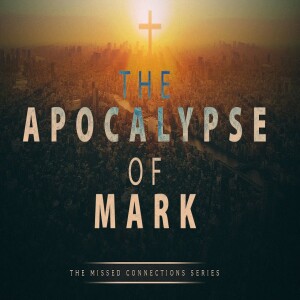
Saturday Feb 13, 2021
Saturday Feb 13, 2021
The Apocalypse of Mark - Missed Connection Series
Introduction to Mark's Gospel and its Old Testament Roots
Today's Bible teaching from Founded in Truth Fellowship delves into the Gospel of Mark, positioning it within a broader biblical narrative that connects the New Testament back to the Old Testament. The speaker, potentially Matthew Vander Els, highlights the "Missed Connection" series, which aims to uncover these links. The Gospel of John was previously discussed, noting its subtle allusions to Israel's history, keeping the focus primarily on Jesus Christ (Yeshua).
Moving to Mark, the speaker points out its brevity compared to Matthew and Luke, and the scholarly theory suggesting Mark might be the earliest Gospel account, serving as a foundation for the others. Mark's narrative begins with a sense of urgency to proclaim the events it describes. This isn't just a simple story about a rabbi, his healing ministry, his crucifixion, and resurrection, or a new way of living out God's Torah. Instead, Mark's proclamation centers on the apocalyptic vision of Isaiah, where God's presence, new creation, and kingdom come crashing into the earth, forever changing it.
Unlike Matthew and Luke, Mark is more reserved in his overt connections to the Old Testament, similar to John's approach. The speaker explains that Mark assumes the reader already understands the overarching story and narrative of the Hebrew Bible. The story of Israel begins in slavery in Egypt, their covenant with God at Mount Sinai and the giving of the Torah. However, the speaker emphasizes that Israel's history quickly takes a downward turn, illustrated by the book of Judges, where the people lose focus on God's character. This culminates in a period where individuals believed they were serving God but acted contrary to His will. The narrative progresses through the united kingdom under Saul, David, and Solomon, reaching a peak with the construction of the Temple.
However, Israel then becomes fixated on wealth and power, mirroring Egypt, leading to exile by the Assyrians and Babylonians. Even after their return, they remained under foreign rule, experiencing oppression under the Persians, Greeks, Maccabees, and finally the Romans during the time of Jesus. This historical backdrop of repeated oppression and a longing for deliverance is crucial for understanding the scene Mark sets. When Jesus sees the people, Mark 6:34 notes their state as "sheep without a shepherd," highlighting their hopelessness after centuries of subjugation. Mark's central objective is to present Jesus as the long-awaited king, the Messiah, who will shepherd this displaced people.
Isaiah's Prophetic Prayer and Mark's Gospel as God's Answer
The teaching then shifts to Isaiah 63 and 64, focusing on a poetic, prophetic prayer expressing a yearning for God's intervention. Isaiah cries out, questioning God's apparent withdrawal and the trampling of the sanctuary by enemies. The powerful plea, "Oh, that you would rend the heavens and come down" (Isaiah 64:1), encapsulates this desperate longing. The Hebrew word "kera" used here signifies a violent tearing or shredding.
The speaker clarifies that apocalyptic literature isn't about the end of the world, but rather a revealing. It's a style using explosive metaphor to unveil unseen realities. Isaiah's prayer for God to violently tear open the heavens to reveal His redemptive power sets the stage for Mark's Gospel. In Mark 1:9-11, at Jesus' baptism, Mark uses the Greek word "schizo," meaning to be shredded or ripped apart, to describe the heavens opening. This contrasts with Matthew and Luke, who use milder terms like "parted" or "opened."
This deliberate choice of language suggests that Mark specifically has Isaiah's prophecy in mind. Mark's Gospel can be seen as God's answer to Isaiah's intercessory prayer. The tearing of the heavens and the descent of the Spirit upon Jesus signify the beginning of God's eschatological work of deliverance, the return of the King to rule over Israel. This fulfills the expectations built up over centuries through the Old Testament prophecies of Isaiah, Jeremiah, and Malachi about a coming king and kingdom. Despite the return from exile, the people still felt enslaved in their own land, awaiting the fulfillment of these promises: a greater exodus, a new king, and the manifestation of God's kingdom on earth.
The True Meaning of the Gospel: God's Kingdom Come
The speaker emphasizes that the gospel is "good news". However, its definition has been unfortunately narrowed down to merely saying a prayer to get into heaven. According to Jesus' own words in Mark 1:14-15, the good news is about "a time being fulfilled and heaven coming to earth. God's kingdom is here". This aligns with the Lord's Prayer: "Your kingdom come." Jesus demonstrated what it looks like when heaven invades earth, not how to escape it.
The Greek word for good news, "euangelion," is related to a verb in the Greek Old Testament announcing a military victory. Examples include the news of Absalom's death brought to David (1 Samuel 18:31 in the Septuagint) and Isaiah 52:7, which speaks of those who bring good news, proclaim peace, and say to Zion, "Your God reigns." In Isaiah 52:8, the good news is identified as "The Lord is returning to Zion".
Mark, in his first chapter, referencing Isaiah 40:3, establishes that his account of Jesus is centered on this very good news of God's kingdom drawing near. Jesus proclaims, "The time has come. The kingdom of God has come near. Repent and believe the good news" (Mark 1:15). In a world often perceived as dark and filled with oppression, Mark declares that God has broken through to claim victory through His kingdom.
To find more Bible Teachings, click the link.
Application for Everyday Life
Recognize God's Active Presence: Understand that God is not distant but has actively intervened in the world through Jesus, tearing through the barriers that separate humanity from Him.
Embrace the True Gospel: Focus on the good news of God's kingdom coming to earth, rather than solely on personal salvation as an escape from earth.
Pray for Enemies: Follow Jesus' example by praying for those who oppose or harm you, seeking their blessing, peace, and freedom from spiritual darkness, rather than their defeat.
Embody Christ's Love: Strive to reflect Jesus' character in your daily interactions, becoming His representative in the world, showing love and compassion to all, even the marginalized.
Fight Spiritual Battles Through Prayer: Recognize that the primary struggles are spiritual and engage in prayer as a powerful weapon against darkness, rather than resorting to worldly means.
Live as Kingdom Citizens: Understand that as believers, you are already part of God's kingdom and act as ambassadors, representing His love and truth in your sphere of influence.
Focus on God's Promises: In times of difficulty, remember the Old Testament prophecies and their fulfillment in Jesus, trusting in God's faithfulness and the ultimate victory of His kingdom.
Examine Your Heart: Reflect on your own desires and whether you truly long for God's justice and kingdom to come in a way that might challenge your own comfort and privilege.
Seek Deeper Understanding of Scripture: Like the "Missed Connection" series, actively seek to understand the links between the Old and New Testaments to gain a richer understanding of God's plan.
Depend on God's Strength: When facing weariness and challenges, remember Isaiah 40:31 and place your hope in the Lord to renew your strength.
Note: This article contains affiliate links.
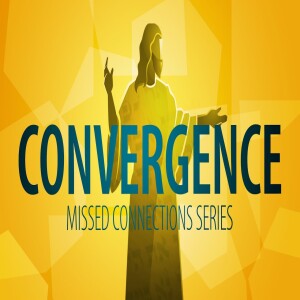
Saturday Jan 30, 2021
Saturday Jan 30, 2021
Convergence - Missed Connections Series
Exploring the Timeless Presence of Jesus in John's Gospel
Today's Bible teaching from Founded in Truth Fellowship, likely delivered by Matthew Vander Els, delves into the unique perspective offered by the Gospel of John regarding the identity and presence of Jesus Christ. The central theme explored is the idea of convergence, where John intentionally blends the narrative of Jesus with the history and scriptures of the Old Testament, revealing Jesus not merely as a figure who appeared 2000 years ago, but as one who has been ever-present throughout all of time. This teaching emphasizes that John's Gospel, part of the "Missed Connections" series, aims to uncover the often-overlooked links between the New Testament and the Hebrew Bible.
One of the key aspects highlighted is John's distinct approach compared to the Synoptic Gospels (Matthew, Mark, and Luke). While the Synoptic Gospels share a similar overall account of Jesus' life and ministry, John intentionally portrays events with a different emphasis and sometimes a different chronology. A prime example is the account of Jesus cleansing the temple. Matthew, Mark, and Luke place this event towards the end of Jesus' ministry, but John positions it at the very beginning, in chapter 2. This deliberate placement, it is argued, is not a chronological error but a theological statement. John wants to immediately establish Jesus as the fulfillment of the Temple of God, the place where heaven and earth meet. This interpretation is further supported by John's reference to Psalm 69:9, "Zeal for your house has consumed me," which John presents with a future tense, prophetically pointing towards Jesus' crucifixion and exaltation.
The teaching stresses that John is less concerned with providing a strict chronological record of Jesus' ministry and more focused on presenting a narrative with a specific theological point. From the outset, John asserts Jesus' divinity, kingship, role in creation, and pre-existence. This is evident in the opening verses of John 1, which declare, "In the beginning was the Word, and the Word was with God, and the Word was God... And the Word became flesh and dwelt among us." Unlike Matthew and Luke, John does not offer a genealogy of Jesus, emphasizing instead his timeless existence.
The teaching explores how John subtly weaves in allusions to key figures and stories from the Old Testament, assuming a certain familiarity with these narratives on the part of his audience. Examples include references to Abraham, Moses, Isaiah, David, and Jacob. When Jesus states, "'Before Abraham was, I am,'" John highlights Jesus' pre-existence and divine nature. Similarly, John notes that Isaiah "saw Jesus' glory and spoke about him," connecting Old Testament prophecy directly to Jesus' present reality, suggesting a transcendence of linear time.
The encounter with the Samaritan woman at Jacob's well in John 4 is another example of John's intentional storytelling. While the well mentioned is not the historically accurate well from Genesis 29, John uses the familiar imagery of Jacob and the well to draw parallels and suggest Jesus as the metaphorical bridegroom offering "living water" to a reconstituted people of God, symbolized by the Samaritans. This illustrates God's love extending beyond traditional boundaries.
Regarding Moses, John presents Jesus as far greater than Moses. While acknowledging Moses as the giver of the Torah and the one who lifted up the bronze snake, John portrays Jesus metaphorically as the bronze serpent and the bread from heaven, emphasizing his superior role as the source of salvation and life. The single reference to David in John 7, concerning the Messiah coming from Bethlehem, is mentioned without explicit explanation, again presupposing the reader's knowledge of Old Testament prophecy. The speaker argues that John's omission of detailed Old Testament narratives is not due to a lack of interest but rather a deliberate choice to keep Jesus at the forefront, with the Old Testament serving as a backdrop that constantly points to him.
The ultimate message of John's Gospel, according to this teaching, is that Jesus has always been present and his power and identity are not limited by time. This understanding has profound implications for believers today, calling them to recognize Jesus' ever-presence in their own lives and to live as ambassadors of Christ in the world. As ambassadors, believers are called to represent Jesus in all aspects of their lives, allowing others to see and experience his presence through their words and actions. The distractions of the world, such as financial anxieties or political divisions, should not overshadow this primary mission of reflecting the kingdom of God.
For more Bible Teachings, click the link.
Application for Everyday Life
Recognize Jesus' Constant Presence: Cultivate an awareness that Jesus is not just a historical figure but is present with you in every moment and situation.
Embrace Your Role as an Ambassador: Understand that your life is a representation of Jesus to the world. Your actions, words, and attitudes should reflect his love, mercy, and justice.
Prioritize God's Kingdom: Avoid getting overly consumed by worldly distractions like financial trends or political turmoil, and instead focus on your eternal mission of representing Christ's kingdom.
Study the Scriptures with a Convergent Lens: When reading the Bible, look for the connections between the Old and New Testaments and how they point to Jesus.
Engage with Your Community as an Embassy of God's Kingdom: Foster an environment of love, grace, forgiveness, and mercy within your faith community and beyond.
Pray for God's Kingdom to Come: Regularly pray for God's will to be done on earth as it is in heaven, recognizing your role in bringing that reality to fruition.
Examine Your Loyalty and Allegiance: Regularly assess whether your life truly reflects your belief in Jesus' ever-presence and your allegiance to his kingdom.
References
Bible Verses
John 1:1
John 1:14
John 2:13
John 2:17
John 3:29
John 4:6
John 4:11
John 7:40-44
Psalm 69:9
Micah 5:2
Books and Resources
The Echoes of the Scriptures in the Gospels by Dr. Richard Hayes
Commentary on the New Testament Use of the Old Testament by G.K. Beale and D.A. Carson
Note: This article contains affiliate links.
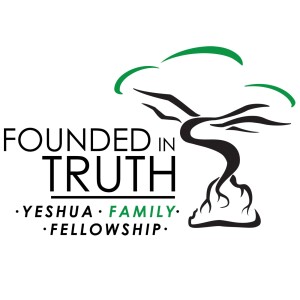
Saturday Jan 23, 2021
Saturday Jan 23, 2021
Rhythms of Grace
In this insightful Bible teaching from Founded in Truth Fellowship, Matthew Vander Els explores the profound concept of finding rest and purpose in the midst of life's inevitable challenges. The message begins by inviting listeners into a community rooted in truth and love, a family centered around the worship of Jesus, the King of Kings. The core of the teaching revolves around the idea that as followers of Jesus, we are called to something far greater than our daily struggles and the fleeting concerns of the world.
The speaker emphasizes that our fundamental mission transcends political turmoil, sensationalized news cycles, and the need for constant validation through opinions. Our primary focus should be on cultivating a kingdom ethic within our relationships, a mission that is far too important to be destabilized by disagreements on secondary matters. It is acknowledged that navigating life's discomforts, unexpected changes, and feelings of lost control can be difficult, often leading to stress, anxiety, sadness, anger, or even hate. While it's easy to profess reliance on God's control during favorable times, our true dependence is tested when circumstances become challenging.
The teaching then delves into a scriptural exploration, specifically focusing on Yeshua's (Jesus') words in Matthew chapter 11, where he speaks about a unique rest that only he can offer. The passage, starting from verse 25, reveals Yeshua's prayer of thanksgiving to the Father for revealing truth to the simple while hiding it from the wise. In Matthew 11:28-30, Yeshua extends a powerful invitation: "Come to me, all who labor and are heavy laden, and I will give you rest. Take my yoke upon you, and learn from me, for I am gentle and lowly in heart, and you will find rest for your souls. For my yoke is easy, and my burden is light." While many focus on the promise of rest and the ease of Yeshua's yoke, the speaker cautions against isolating these verses from their broader context.
To understand the full weight of Yeshua's words, it's crucial to examine the preceding verses in Matthew 11:20-24. Here, Jesus denounces the towns of Chorazin, Bethsaida, and Capernaum for their lack of repentance despite witnessing his many miracles. He declares that their judgment will be more severe than that of Sodom. This context reveals that Yeshua's offer of rest comes immediately after the rejection he faced in these towns. The speaker suggests that God often hides his true wisdom from those who are wise and arrogant in their own eyes, while extending grace to the weary and humble. The pursuit of intellectual superiority and the need to constantly argue can sometimes lead to sacrificing the very love that Yeshua offers.
To gain a deeper understanding, the speaker introduces the concept of different Bible translations, highlighting that no single translation is universally superior. Translations exist on a spectrum from more literal, word-for-word renderings to more paraphrased, thought-for-thought interpretations. While literal translations are valuable for studying the original languages, thought-for-thought translations can better convey the intended meaning and impact of the text. As an example of a paraphrase, The Message Bible by Eugene Peterson is mentioned, a translation the speaker initially mocked but later came to appreciate for its ability to reveal the relational and tender aspects of Jesus' communication. In The Message's rendition of Matthew 11:25-30, Yeshua's invitation is presented with a sense of intimacy and an offer to teach "the unforced rhythms of grace." This "labor of grace" promises a life unhindered by worldly distractions and a deep, true connection with God, offering the essence of shalom – a comprehensive peace and eternal life that begins now.
The teaching draws a compelling parallel between Yeshua's invitation and the Old Testament, specifically Jeremiah chapter 6, verse 16: "This is what the Lord says: 'Stand at the crossroads and look; ask for the ancient paths, ask where the good way is, and walk in it, and you will find rest for your souls.'" The speaker notes the striking similarity in the promise of finding rest for one's soul. However, understanding the context of Jeremiah's words is crucial. In Jeremiah 6:17, the people respond, "But we said, 'We will not listen!'" This rejection leads to God's warning of impending disaster for failing in their mission to be a light to all nations, despite their adherence to the literal commandments of the Torah and temple practices.
For more Bible Teachings, click the link.
Application for Everyday Life
Prioritize the mission: Remember that your life's purpose extends beyond daily challenges and worldly trends. Focus on sharing the message of God's kingdom in your interactions and relationships.
Seek true rest in Yeshua: When feeling overwhelmed, turn to Jesus for the unique rest he offers, a rest that transcends temporary relief and brings peace to your soul.
Examine your focus: Be mindful of what consumes your attention. Are you getting caught up in distractions that pull you away from your core mission and your relationship with God?
Embrace grace over rigid legalism: Understand that following Jesus is not just about adhering to rules but about experiencing the "unforced rhythms of grace" in your life.
Look beyond the surface: When studying Scripture, consider the historical and literary context to gain a deeper understanding of the meaning and application.
Practice humility: Be open to learning and recognize that true wisdom comes from God, often revealed to the humble rather than those who rely solely on their own intellect.
Persevere through difficulties: Challenges are a part of life, but they are not the defining factor. Maintain your focus on the mission and endure through prayer and fellowship.
Seek support when needed: There is no shame in asking for help during difficult times. Reach out to others for counseling, therapy, or simply support.
Continuously evaluate your heart: Regularly assess your priorities and remove anything that hinders you from fully experiencing the rest and peace that Jesus offers.
Take on Yeshua's "yoke": Embrace his teachings and way of life, which bring a peace and lightness that surpasses worldly burdens.
References
Bible Verses:
Matthew 11:20-24: biblehub.com/matthew/11/20.htm
Matthew 11:25-30: biblehub.com/matthew/11/25.htm
Jeremiah 6:16: biblehub.com/jeremiah/6/16.htm
Jeremiah 6:17: biblehub.com/jeremiah/6/17.htm
Books and Resources:
The Message Bible by Eugene Peterson
Note: This article contains affiliate links.
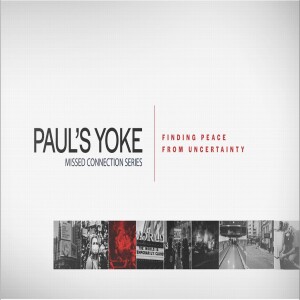
Saturday Jan 16, 2021
Saturday Jan 16, 2021
Paul's Yoke - Finding Peace From Uncertainty
In this Bible teaching from Founded in Truth Fellowship, speaker Matthew Vander Els explores the challenges and uncertainties of life, drawing parallels to the experiences of the Apostle Paul, particularly his journey to Rome as recorded in the Book of Acts. The message emphasizes how believers can find peace, maintain focus, and remain faithful to their mission even amidst personal struggles, societal chaos, and unexpected events. It encourages listeners to reflect on their current state, assess their focus and faithfulness, and remember their ultimate allegiance to God.
The teaching begins by acknowledging the turbulent times we live in, marked by events like the pandemic and presidential elections, which can lead to stress, anxiety, anger, and even depression. Many might find themselves overwhelmed by these circumstances, questioning how to move forward while carrying the emotional baggage of the past. The speaker asks if believers ever feel like their experience during difficult times should be different, wondering why peace, hope, and calm don't seem readily available.
To address these questions, the teaching turns to the example of the Apostle Paul. Despite facing intense political turmoil in the Roman Empire, which ultimately led to his beheading for refusing to acknowledge Caesar as Lord, Paul remained steadfast in his devotion to Yeshua (Jesus) as the only true Lord and King. His life and faith were so deeply rooted in Christ and the proclamation of His kingdom that he dared to defy the most powerful earthly authority. This raises the question: what kind of faith would make someone so absorbed in Jesus and His mission that they would lose confidence in worldly power and focus solely on being an ambassador for God?
The Book of Acts, particularly Luke's account, provides insight into Paul's journey and the early church's efforts to understand and implement Jesus' teachings after His ascension. The initial confusion and the unexpected inclusion of Gentiles in the Christian movement highlight the dynamic and often challenging nature of following God's plan. Paul himself was a radical transformation, going from a fierce persecutor of early Christians to a passionate messenger of God's redemptive love. His journey was not without its difficulties, including opposition, imprisonment, and personal struggles with his own human weaknesses.
The teaching then focuses on Paul's voyage to Rome in Acts chapter 27. Luke intentionally portrays this journey as an epic adventure, filled with action and drama. Even though Paul was a prisoner being transported to Rome, the narrative reveals how God was working through these circumstances to fulfill His mission for Paul. Despite Paul's warnings about the dangers of continuing the voyage, the ship's pilot and owner disregarded his advice. This sets the stage for a severe storm that leads to the crew throwing cargo overboard in a desperate attempt to save the ship.
In the midst of this perilous situation, Paul's faith and conviction shine through. He reminds the sailors and soldiers that he had warned them, but then delivers a message of hope, stating that despite the impending shipwreck, no lives would be lost because an angel of God had appeared to him, assuring him that he must stand before Caesar. This revelation retroactively gives meaning to all of Paul's previous trials and tribulations. His journey, with all its hardships, was ultimately leading him to this pivotal moment where he would testify to Christ's power before the most powerful ruler in the world.
The teaching emphasizes that this journey was preparing Paul for his mission. His faithfulness and unwavering belief in God's plan built him up to stand before Caesar without doubt. Even as the ship was about to crash, Paul took bread, gave thanks to God (Eucharisto), and shared it with everyone on board, including the soldiers, sailors, and fellow prisoners. This act of gratitude in the face of imminent danger serves as a powerful example of maintaining focus on God even in the darkest of times. The speaker highlights the significance of this moment, where Paul, surrounded by a diverse group of people, proclaims his thankfulness to God.
The message draws a crucial insight from this account: Paul was not merely going to Rome as a prisoner to face judgment, but in God's providence, to fulfill a divine purpose. Just as Jesus went to the cross, God protected Paul through the storm and shipwreck so that he could accomplish his mission in Rome. This demonstrates that God is ultimately in charge, and Paul's presence in Rome was part of God's plan, not solely dictated by Roman law.
The teaching then poses a profound question: what if the circumstances you find yourself in right now are specifically intended for you to be in? The stresses, doubts, sadness, anger, and uncertainties might all be part of a larger journey orchestrated by God. Paul seemed to find a transcendent rest in knowing that God was with him throughout his trials, maintaining his focus on the ultimate goal and not being swayed by temporary setbacks or frustrations. His example encourages listeners to view their current struggles not as defining factors, but as part of a bigger mission established by God, where they are His ambassadors. The obstacles encountered along the way serve to prepare individuals for greater fulfillment of that mission.
The story of Joseph, who faced betrayal, slavery, and imprisonment, is presented as another example of how a difficult journey can ultimately lead to the fulfillment of God's purpose. Despite constant hardships, Joseph remained focused and faithful, eventually realizing that his journey had brought him to a place where he could serve a greater mission.
The speaker concludes by asking listeners to consider where their focus and faithfulness lie. Where is their energy and resources being directed, as this reveals where their heart and true allegiance are? The message acknowledges that the overwhelming events of the past year may have caused distraction and uncertainty. It reminds listeners that God has not forsaken them and is proud of them as His ambassadors on a mission. Even in times of struggle with vices, anger, or depression, individuals are encouraged to seek help and remember that these challenges are not the end of their journey. God has a spectacular mission ahead, and He is cheering them on. The core message is to keep going, keep climbing, keep crawling – God is with them.
To find more Bible Teachings, click the link.
Application for Everyday Life
Maintain focus on your ultimate mission: Recognize that your life has a purpose beyond your current circumstances. Identify what you believe God's mission for you is and keep that in mind amidst daily challenges.
Practice faithfulness in difficult times: Like Paul and Joseph, choose to remain faithful to God even when facing stress, doubt, sadness, or anger. Trust that God is working through these situations.
Seek peace and rest in God: Remember that God provides comfort and rest, especially during overwhelming times. Focus on your relationship with Him as the source of true peace.
Be thankful in all circumstances: Follow Paul's example of giving thanks to God (Eucharisto) even in the midst of hardship. Cultivating gratitude can shift your perspective and bring peace.
Recognize God's providence in your journey: Believe that God can use even difficult or unexpected events to prepare you for your purpose. Look for His hand at work in your life.
Don't be defined by your struggles: Understand that the challenges you face do not define you or your mission. They can be opportunities for growth and strengthening of faith.
Seek help when needed: If you are struggling with vices, anger, or depression, recognize the importance of reaching out for support. There is no shame in seeking help to overcome these obstacles.
Be a witness in your current sphere of influence: Like Paul on the ship, look for opportunities to share your faith and give thanks to God in your present circumstances, even with those who may seem very different from you.
Remember God's constant presence: Take comfort in the assurance that God is with you always, encouraging you to keep moving forward in your mission.
Note: This article contains affiliate links.
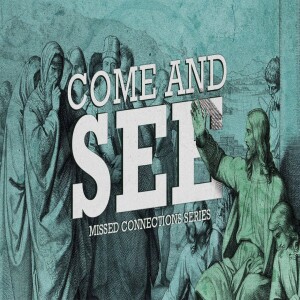
Saturday Jan 09, 2021
Saturday Jan 09, 2021
Come and See
The Invitation to Encounter the King
This Bible teaching from Founded in Truth Fellowship, likely delivered by Matthew Vander Els, centers on the Gospel of John and its profound invitation to recognize and experience Jesus, or Yeshua, as the prophesied Messiah, the King of Kings, and the very source of new creation. The message emphasizes that this invitation, encapsulated in Philip's simple words "Come and see," extends not only to those who first encountered Jesus but also to every reader of John's Gospel.
The teaching begins by acknowledging the anxieties and uncertainties of the world in 2021. It contrasts these worldly concerns with the enduring reign of God's kingdom, where peace, love, and mercy flow from the throne of King Yeshua. The speaker encourages listeners to actively choose to immerse themselves in this divine reality, particularly on the Sabbath day, which is presented as a time set apart to connect with God and experience His peace. Reflecting on distractions that might hinder this connection is encouraged.
The message then delves into the unique nature of the Gospel of John compared to the other three Gospels: Matthew, Mark, and Luke, which are collectively known as the Synoptic Gospels. John's account is described as more "original," offering a distinct perspective on the ministry of Jesus. While the Synoptic Gospels provide similar tours of Jesus' life and ministry, John's Gospel starts differently, not with genealogy or nativity, but by reaching back to the creation account in Genesis 1.
However, John's purpose is not merely to revisit the original creation but to highlight a new creation that has been inaugurated through Jesus Christ. This new reality is one where life itself flows from the power and person of Yeshua as the Messiah and King. John's Gospel, therefore, invites readers to see Jesus not just as a historical figure, but as the divine Logos through whom all creation came into being.
The narrative then shifts to the encounter between Philip and Nathanael in John chapter 1. Philip, having been called by Jesus to "follow me," enthusiastically declares to Nathanael, "We have found him, the one Moses wrote about in the Torah, and about whom the prophets also spoke—Jesus of Nazareth, the son of Joseph." The speaker emphasizes that at this point in the story, John's account provides no explicit reason for Philip's profound conviction. Jesus simply says, "Follow me."
Nathanael's initial skepticism, questioning whether anything good could come from Nazareth, highlights a common prejudice. Philip's response, "Come and see," is presented as a pivotal moment, an invitation not only to Nathanael but also to the reader of John's Gospel. This phrase encapsulates the central theme of the teaching: a personal encounter with Jesus is the key to recognizing him as the promised Messiah.
The teaching underscores that John's Gospel immediately establishes high expectations for Jesus, identifying him as the divine Logos, the Lamb of God who takes away the sins of the world, and Israel's Messiah and King. While Philip's declaration might seem like an overzealous claim, the opening of John suggests a revelatory insight. Therefore, readers are called to "come and see" how this Jesus of Nazareth is indeed the true King.
The message then explores the conflicts Jesus faced, particularly with the religious leaders who accused him of violating the Sabbath. The healing of a lame man and Jesus' instruction for him to carry his mat sparked outrage among the conservative Torah keepers. Instead of defusing the situation, Jesus escalated it by declaring, "My Father is working until now, and I am working." This statement led to accusations of blasphemy, as Jesus claimed equality with God.
This conflict becomes a launching pad for a significant discourse by Jesus in John chapter 5. In this discourse, Jesus challenges the religious elite who meticulously studied the scriptures, believing they held the key to eternal life. Jesus asserts that the scriptures themselves point to him, and true life is found only in him. He states, "You search the scriptures because you think that in them you have eternal life; and it is they that bear witness about me, yet you refuse to come to me that you may have life."
The speaker emphasizes the paradoxical tragedy that those whose very role was to interpret Moses and the prophets failed to recognize the one to whom these writings testified. Despite their extensive knowledge of the Torah, their rejection of Jesus meant they failed to understand its true purpose. This idea is described as a "fateful circulatory," where understanding the Old Testament requires first believing in Jesus. Jesus states, "If you believed Moses, you would believe me; for he wrote of me."
The teaching highlights that John's approach to linking the Old Testament to Jesus differs from that of Luke and the Synoptic Gospels, who often use direct citations. John's style is more evocative, using images and allusions to Israel's scriptures to make his points. For example, the reference to the serpent lifted up by Moses in Numbers is used to illustrate the lifting up of Jesus.
The message addresses the misconception that John's Gospel promotes the idea that the Torah is done away with or that Judaism is replaced by Christianity. Instead, it argues that John presents the coming of Jesus as the fullness and evolution of God's plan revealed in the Old Testament. The law given through Moses is understood to point towards the grace and truth that came through Jesus Christ. The author of Hebrews is quoted as saying that the law is "only a shadow of the good things that are coming, not the realities themselves." Similarly, Paul in Colossians states that the fullness of God is found in Jesus.
The teaching returns to the question of how Philip knew with such certainty that Jesus was the Messiah. While John does not explicitly state the reason, the Gospel itself paints a picture of Jesus' identity as the Christ, the King who brings a new order, surpassing earthly empires and offering freedom from despair. This King achieves victory not through worldly power but through service, forgiveness, mercy, and self-sacrifice. Believers are called to embody this radical ethic.
The message concludes by emphasizing the immediate desire of Jesus' first followers to bring others to him. This is contrasted with instances in the Old Testament where God's chosen people focused on ethnic privilege rather than being a channel of blessing to other nations. The speaker challenges listeners to reflect on whether they actively share the good news of Jesus with others, driven by a genuine desire for them to experience God's peace and eternal life. A personal audit of one's communication, especially on social media, is suggested to assess whether it reflects allegiance to Jesus. Ultimately, the teaching encourages everyone, regardless of their current emotional state, to "come and see" the hope found in Jesus.
To find more Bible Teachings, click the link.
Application for Everyday Life
Seek Deeper Connection with God: Take intentional time, perhaps especially on a Sabbath, to step away from distractions and focus on God's presence and peace.
Reflect on Your Beliefs: Examine what might be preventing you from fully experiencing the peace and rest offered by God.
Engage with Scripture Expectantly: Read the Bible, particularly the Gospel of John, with the understanding that it points to Jesus as the Messiah and King.
Invite Others to Encounter Jesus: Like Philip, be ready to share your faith and invite others to "come and see" who Jesus is.
Recognize Jesus in the Old Testament: Understand that the Hebrew Bible foreshadows and points to the person and work of Jesus.
Embrace God's Promises Fulfilled in Jesus: See Jesus as the ultimate fulfillment of God's promises and the evolution of His plan.
Live by Kingdom Ethics: Emulate Jesus' example of service, forgiveness, mercy, and love, even towards those you consider your enemies.
Share the Good News: Be mindful of your communication and ensure it reflects a desire to share the hope and life found in Jesus with others.
Note: This article contains affiliate links.
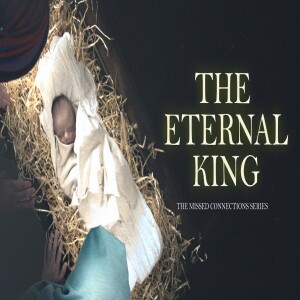
Saturday Dec 26, 2020
Saturday Dec 26, 2020
Sure! Please provide the content you'd like me to format with internal links, and I'll make the necessary adjustments as requested.
Note: This article contains affiliate links.
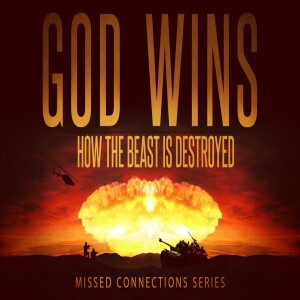
Saturday Dec 19, 2020
Saturday Dec 19, 2020
God Wins - How the Beast is Destroyed
The Heart of God's Plan: Inclusion of All Nations
This Bible teaching from Founded in Truth Fellowship, delivered by Matthew Vander Els, explores the overarching narrative of the Bible, emphasizing that God's intention has always been to include all nations in His family, a concept that finds its roots in the Old Testament and culminates in the New Testament through Jesus Christ. The teaching highlights a series called "The Missed Connection Series," which examines the intentional connections between Old and New Testament writings, revealing that the New Testament authors deliberately built upon the foundations laid in the Torah, the Prophets, and the Writings of the Old Testament.
The core idea presented is that the Old Testament story depicts God raising a people, Israel, giving them the Torah, but they ultimately failed due to the weakness of their hearts, leading to exile. The Old Testament concludes with God's promise of a Redeemer who would not only restore but also embody God's kingdom perfectly, correcting humanity's inability to reflect God's image through a new heart aligned with God's true principles.
The teaching delves into specific Old Testament passages, particularly from the Psalms, to demonstrate this theme of Gentile inclusion. It cites Dr. Robert D. Miller II's article, "The Gentiles in the Zion Hymns, Canaanite Myth and Christian Mission," which argues that the Psalms are an often overlooked resource showing a more positive view of Gentiles compared to other parts of the Old Testament. According to this article, the Psalms focus on the Gentiles coming to Zion, God's holy mountain.
Zion Hymns and the Gathering of Nations
The teaching examines Psalm 68 as a prime example of a Zion hymn, psalms that exalt God's ultimate victory, often with battle themes where God establishes His throne in Zion. While the psalm begins with the imagery of God's wrath on His enemies, it progresses to the gathering of nations to worship Him. Verse 31 specifically mentions nobles from Egypt and Cush hastening to stretch out their hands to God, indicating the inclusion of formerly adversarial nations in the worship of Yahweh. This imagery of kingdoms of the earth singing praises to the Lord and acknowledging Him as the "Cloud Rider," a title also associated with the Canaanite god Baal, suggests a polemic where Yahweh's ultimate authority is being asserted over all. This concept of the "Cloud Rider" is also connected to the Son of Man figure in Daniel 7, who triumphs over the "beast" representing the selfish and oppressive earthly kingdoms and establishes a kingdom made up of all nations and languages that will last forever.
Psalm 86 is also explored, particularly verses 8-13, which speak of all nations God has made coming to worship before Him and glorify His name. This is presented as a future trajectory where all nations will be brought into the family of Yahweh. The teaching emphasizes that while the covenant with Israel at Sinai highlighted their distinctiveness, the foundational covenant with Abraham promised that all nations would be blessed through his seed. Therefore, the salvation of all nations will come through Israel, not in isolation from them.
Psalm 87: Adoption into Zion
Psalm 87 is highlighted as a powerful depiction of this inclusion. It speaks of the city God founded on the holy mount, Zion, which He loves more than any other dwelling place of Jacob. The psalm declares, "Glorious things of you are spoken, O city of God." Notably, it mentions Rahab (another name for Egypt), Babylon, Philistia, Tyre, and Cush, stating that "This one was born there," referring to Zion. The teaching explains that Rahab is also a term for the chaos monsters in ancient Near Eastern theology, like the Tanin (sea serpent) in Genesis 1 and Leviathan, representing the forces of chaos and deconstruction. Here, Egypt is symbolically called the Rahab beast, representing the nations collectively in contrast to Zion.
The speaker quotes Dr. Miller, explaining that these nations, including the enemies of Israel, are brought into Zion, where God declares, "This one was born here." The Hebrew verb "yeled" used here is the same verb used in Psalm 2:7, which speaks of adoption. Dr. Goldingay, an Old Testament scholar, is quoted as saying that Yahweh declares these nations as having been fathered or adopted in Jerusalem, making them true citizens of the city. This concept challenges the expectation of violent annihilation of nations opposing Israel, suggesting a different kind of victory through adoption and inclusion.
Jesus' Victory and the Mission of Forgiveness
The teaching emphasizes that Jesus fought the "beast" on the cross, allowing it to do its worst. However, instead of calling down destruction, Jesus said, "Father, forgive them, for they don't know what they are doing." He defeated death and resurrected, offering a spirit of life, love, and unity that connects all nations. In the Psalms, this is seen as a legal adoption of nations into God's family.
This concept is echoed in Jesus' words in Matthew 8:11, where He says that many will come from the east and west to take their place at the feast with Abraham, Isaac, and Jacob in the kingdom of heaven, while those expected to be there will be cast out. This highlights that it is not just Israel but all people who need atonement. Revelation also speaks of a new Jerusalem coming down from heaven and the absence of the sea, which represents the forces of chaos, signifying God's complete unity and victory. The song of Moses and the Lamb in Revelation 15:3-4 quotes Psalm 86, declaring that all nations will come and worship before the Lord, underscoring the consistent mission of God to reclaim all humanity.
For more Bible Teachings, click the link.
Application for Everyday Life
Embrace a Mission of Inclusion: Recognize that God's plan extends to all people, and actively seek to include and love those around you, regardless of their background or beliefs.
Prioritize Love and Forgiveness: Emulate Jesus' response to His enemies by practicing forgiveness and extending love, even to those you disagree with or who have wronged you.
See Fellow Believers as Allies: Recognize the unity of the body of Christ, looking beyond differences in traditions or backgrounds to see other believers as partners in the same mission.
Be Ambassadors of Zion: Let your life reflect the values of God's kingdom – love, justice, and reconciliation – showing the world what God's life and love truly look like.
Focus on God's Victory: Remember that victory over the forces of chaos and division has already been won through Jesus Christ, and live with the confidence and hope that this brings.
Actively Participate in God's Mission: Don't be content with simply following commandments; actively engage in the mission of reclaiming people back to God through love and service.
Examine Your Heart: Reflect on whether your actions and attitudes represent the inclusive love of Zion or the divisive forces of the "beast."
References
Bible Verses:
Genesis 1
Psalm 2
Psalm 68
Revelation 15
Books and Resources Mentioned:
Echoes of the Scriptures by Dr. Richard Hayes
Note: This article contains affiliate links.
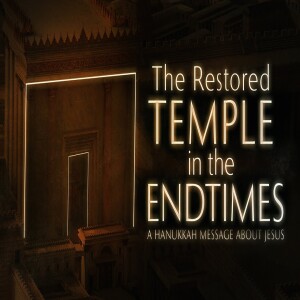
Saturday Dec 12, 2020
Saturday Dec 12, 2020
The Restored Temple in the End Times
Welcome to this Bible teaching from Founded in Truth Fellowship. We're currently observing Hanukkah, and this message, delivered by Matthew Vander Els, titled "The Restored Temple in the End Times," will explore the significance of this festival for Christians, followers of Yeshua (Jesus). Often, we search for something bigger than ourselves, a community grounded in truth and love, a place to worship the King of Kings. At Founded in Truth, we see ourselves as more than just a fellowship; we're a family, and we welcome you home.
This teaching will take a break from our series on missed connections to delve into why Hanukkah holds importance for believers in Jesus and how this eight-day observance should have a profound meaning for us. The central theme of Hanukkah is dedication, rededication, or restoration – specifically, the restoration of the place where God dwells, the altar, and the sacrifices, thereby indirectly restoring the holy days of Scripture. This restoration symbolizes the meeting of heaven and earth and carries prophetic significance for us moving forward.
To understand Hanukkah, let's examine the historical context. The celebration of Hanukkah is not primarily about a war victory, political independence, the installation of new leadership, or God punishing oppressors. Instead, the focus is on the dedication of the altar. This remembrance serves as a powerful reminder that no matter what happens in the world, even if God's presence, His house, or the altar of communion is taken away, there is always hope and grace from God. There is always a path to return and rededicate ourselves to Him. As stated in 1 Maccabees chapter 4, verse 59, the Maccabees determined that every year, during the winter month on the 25th day, there would be a day dedicated to the rekindling of the intimate relationship between humanity and God. Regardless of how distant one feels, Hanukkah is a reminder of hope.
Yeshua and the Festivals
John chapter 6 links Yeshua to Passover. The text mentions that the Jewish Passover festival was near when Jesus fed a large crowd with bread and fish, echoing the manna provided during the Exodus. This association portrays Yeshua as the bread of life, inaugurating a new and greater Passover, a greater Exodus.
In John chapter 7, Yeshua is connected to the Feast of Tabernacles (Sukkot). During the festival, Jewish leaders were looking for Jesus. John structures his narrative to draw attention to this connection. On the last and greatest day of the festival, Jesus declared, "'Let everyone who is thirsty come to me and drink. Whoever believes in me, as Scripture has said, rivers of living water will flow from within them.'" John clarifies that Jesus was speaking about the Holy Spirit. This statement is particularly significant because during Sukkot, a water-pouring ceremony took place, symbolizing God's provision of water and the anticipated outpouring of the Holy Spirit. Jesus's words indicate that He is the one who truly quenches spiritual thirst, the ultimate fulfillment of Sukkot.
Believers as the Restored Temple
As believers, we recognize Jesus as the fulfillment of the Hanukkah story, the true restored temple. When we celebrate Hanukkah, we celebrate the festival of the light, reminded of the hope found only in Yeshua. The Gospel of Matthew concludes with the Great Commission (Matthew 28:16-20), where Jesus, having all authority in heaven and on earth, commands His followers to go and make disciples, teaching them to obey everything He has commanded. This mandate emphasizes a self-sacrificial love, mirroring the love of God shown through Yeshua. Jesus promises to be with His followers always, to the very end of the age. We are called to be His representatives on earth, manifesting His love to the world.
To find more Bible Teachings, click the link.
Application for Everyday Life
Introspection and Rededication: Take time for personal reflection to identify areas in your life that need rededication to God.
Removing Hindrances: Be willing to confront and remove any "old altars" or distractions that prevent the light of Yeshua from shining through you.
Embracing Forgiveness: Follow Yeshua's example by forgiving your enemies and those who persecute you, reflecting God's love.
Living as the Temple: Recognize that as a follower of Yeshua, you are a temple of the Holy Spirit, and strive to live in a way that honors God and allows His presence to be known to others.
Extending God's Kingdom: Actively participate in the expansion of God's kingdom by sharing the love of Yeshua with the world.
Focusing on Dedication, Not Just Victory: Remember that the core message of Hanukkah is dedication and restoration, not solely a military triumph.
Finding Hope in Grace: Regardless of past failures or current struggles, trust in God's enduring grace and the possibility of new beginnings.
Resources
The Bible by Various Authors
N.T. Wright - The Day the Revolution Began
Victor J. Donovan - Hanukkah and the Birth of Christ
Biblehub Verses
1 Maccabees 4:59
2 Maccabees 7
1 Kings
Ezekiel 34
John 2:19
John 6
John 7
John 10:22
Matthew 12:6
Matthew 28:16
1 Corinthians 3:16
1 Corinthians 6:19
1 Peter 2:5
Zechariah 2
Note: This article contains affiliate links.
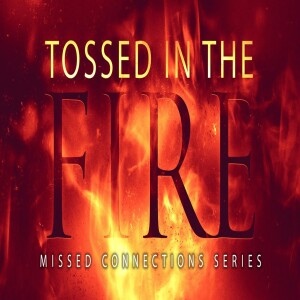
Saturday Nov 21, 2020
Saturday Nov 21, 2020
Tossed in the Fire - Missed Connections Series
In this Bible teaching from Founded in Truth Fellowship, Matthew Vander Els explores the deeper meaning behind Jesus' allegory of the vine and the branches in John chapter 15. This teaching is part of a series called "Missed Connections," which aims to uncover how the authors of the New Testament connected their writings to the stories and prophecies of the Old Testament. The goal is to help listeners understand the richer context of the Bible and recognize Jesus (Yeshua) as the fulfillment of Old Testament prophecies.
Many are familiar with the basic understanding of John 15, where Jesus declares, "I am the true vine, and my Father is the vinedresser." The branches represent believers, and the teaching often focuses on the importance of staying connected to Jesus to bear good fruit. This imagery is commonly used in Christian circles, even appearing on bumper stickers and t-shirts. However, this teaching delves deeper, suggesting that understanding the Old Testament context, particularly the book of Ezekiel, can provide a more profound understanding of Jesus' words.
Matthew Vander Els highlights that while the surface-level understanding of John 15 is valuable, exploring the Old Testament reveals that Jesus' analogy draws upon existing prophetic imagery. Christian scholars recognize the connection between John 15 and several Old Testament passages, including Isaiah 5:1-7, Jeremiah 2:21-22, and Ezekiel 15:1-8 and 17:1-10.
The teaching examines each of these potential Old Testament sources. Isaiah 5:1-7 presents a poem where God refers to Israel as his vineyard that yields wild grapes instead of good fruit. While this passage uses vineyard language and mentions bad fruit and pruning, the textual connections to John 15 in the Greek Septuagint (the Greek version of the Old Testament commonly used by New Testament authors) are limited to just a couple of similar words. Interestingly, Matthew Vander Els points out a "nerdy Bible moment" in Isaiah 5:7 where the prophet seems to playfully use rhyming words in Hebrew to emphasize God's disappointment. Despite the vineyard imagery, Isaiah 5 is not considered the primary source for John 15 due to the weaker linguistic links.
Jeremiah 2:21 also uses the metaphor of a vine, where God says, "Yet I planted you a choice vine, wholly of pure seed. How then have you turned degenerate and become a wild vine?" The connection here lies in the idea of God planting a vine, which echoes the language in John 15:1. However, a key difference is that in Jeremiah, the vine represents Israel, whereas in John 15, Jesus himself is the vine. Furthermore, the concept of fruit-bearing shifts from the vine (Israel) in Jeremiah to the branches (believers) in John, making a direct connection less straightforward.
The teaching then focuses on the book of Ezekiel, specifically chapters 15 and 17, as the most compelling Old Testament background for John 15. In Ezekiel 15:1-8, the imagery of the vine is used to describe the inhabitants of Jerusalem as useless wood fit only for burning. Similarly, Ezekiel 17:1-10 presents an allegory of a vine representing the kingdom of Judah and its leaders, who face destruction due to their disloyalty.
A crucial point emphasized in the teaching is the significant number of verbal parallels between these passages in Ezekiel (in the Greek Septuagint) and John 15. According to Christian scholarship, Ezekiel's vine parables share more vocabulary and phrases with John 15 than Isaiah or Jeremiah do. Notably, the Greek word for "branch," *klema*, is used regularly in the Septuagint of Ezekiel and appears only in John 15 in the entire New Testament. This unique linguistic connection strongly suggests that John's intended audience, familiar with the Old Testament, would have recognized the allusions to Ezekiel.
Understanding this Old Testament context from Ezekiel is vital because it reveals that the vine and branches imagery was already associated with the **failure of Israel's leaders, particularly the Davidic kings, and the impending judgment**. The vine of David had fallen due to the kings' unfaithfulness and their reliance on other nations instead of God. The branches, representing the leadership associated with these apostate kings, were also considered worthless.
Therefore, when Jesus says, "I am the true vine," he is contrasting himself with the failed vine of the Davidic dynasty. The branches that do not abide in him and bear fruit are likened to the useless branches in Ezekiel that are gathered and thrown into the fire. The teaching emphasizes that John 15 is not merely a call for individual perfection but a call for **unwavering allegiance to King Jesus**, the true and unfailing leader. Just as the disloyal leadership in Ezekiel faced destruction, those who are not loyal to Jesus will be like useless wood.
The analogy extends to contemporary believers. Just as ancient Israel was tempted to seek help from other "eagles" (political powers), modern Christians can also be tempted to place their ultimate trust in earthly solutions rather than God's kingdom. True loyalty to Jesus means that one's life should reflect the values and priorities of his kingdom, even if it means standing apart from the ways of the world.
For more Bible Teachings, click the link.
Application for Everyday Life
Examine your allegiances: Reflect on where your ultimate loyalty lies. Is it primarily with earthly systems and powers, or with the kingdom of Jesus?
Prioritize God's kingdom: Make decisions and live in a way that reflects the values of Jesus' kingdom, such as love, kindness, and justice, rather than solely pursuing worldly success or approval.
Focus on progress, not perfection: Recognize that allegiance to Jesus is defined by the direction of your life – are you moving towards his image? Even with imperfections, loyalty to the true vine leads to bearing fruit.
Recognize the conflict: Understand that Jesus' kingdom will often be at odds with the values and systems of the world. Your loyalty to Jesus may mean standing against popular opinion or worldly trends.
Practice love and kindness: Jesus' commandment is to love one another as he loved us. This includes those who are difficult to love or who may even be considered enemies.
References
John 15:1
John 15:1-17
John 15:12
Isaiah 5:1-7
Jeremiah 2:21-22
Ezekiel 15:1-8
Ezekiel 17:1-10
Books and Resources Mentioned
The Unseen Realm by Dr. Michael Heiser
Echoes of Scripture by Richard Hayes
Echoes of the Prophet by Dr. Gary Manning
Note: This article contains affiliate links.






